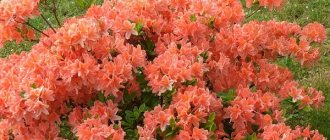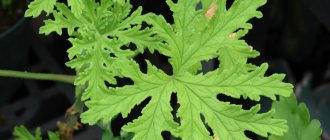In spring, it is one of the very first to bloom, unobtrusively and harmoniously fitting into the overall picture of the awakening garden. Lungwort is a modest and graceful primrose with intricately colored flowers and leaves, a plant from that small percentage of medicinal herbs whose healing effects do not remain outside the pharmacopoeial framework of official medicine. Everyone who has ever walked in the spring forest of central Russia knows what lungwort looks like. How and why to grow it on the plot will be of interest to those who care about their health and, when choosing plants for their plot, prefer to combine the beauty and benefits of flowering crops.
Description of the plant and photo
Lungwort or pulmonaria is a perennial rhizomatous crop from the Borachnikov family. Forms low clumps due to a dense basal rosette of large oblong long-petioled leaves. The color of the leaf blades often has a spotted silver pattern. It is widespread from the Caucasus to Siberia, throughout Western and Eastern Europe, and grows in the northern regions of Central Asia. The leaves of most species have short but dense pubescence.
Flowering is early, in spring, sometimes at the beginning of summer, lasting about a month. Flower buds are formed in the apical part of the shoots in paired curls. In the wild, the flowers are small, usually not exceeding 1 cm in diameter; in varietal varieties they are 2 times larger. Their characteristic feature is the change in color of the petals as they are pollinated. From pale pink and bluish hues at the beginning of flowering, they gradually become lilac, deep blue or violet.
The plant is a valuable honey plant; the tubular flower corolla contains a high-quality portion of fragrant nectar. This is the reason for all its numerous popular names, which are based on the word “honey”.
Selected species
Now Lungwort, like many breeding varieties, is grown under artificial conditions.
There are a large number of lungworts of variegated and flowering varieties:
- David Ward - leaf blade with silver spots and a white border.
- Golden Haze - with a yellow border.
- Berries and Cream.
- Majesty has almost silver foliage throughout.
- Silver Shimmer's - with a curved edge.
- Mrs. Moon - red-violet flowers and lush graceful leaves.
- Dora Barnsfeld - light pink flowers.
- Argentea Group - heavily spotted leaves, almost silver, and initially red buds, the opening flowers are already a rich dark purple color.
- Silverado - large leaves with a silver central part, green border; white, blue, pink flowers on one plant at once.
- Little Star.
- May Bouquet.
- Northern Lights.
- Foreign Bowles Red, Janet Fisk and Margery Fish.
Description of lungwort varieties with photos
The description of the lungwort genus includes 18 plant species, but in practice this division is often conditional due to the high cross-pollination of the crop and the mixed habitat of their growth. Due to the fact that the plant is not often found in pure species forms, there are contradictions in this classification; the opinions of biologists regarding their number are divided. Let's list the most popular ones.
Red lungwort
In spring, this variety is one of the first to bloom, blooming bright red buds. The rhizome is elongated, prone to rapid growth. Each bush can take root within a radius of up to 1 m around itself, due to which dense clumps will soon form in the place where the red lungwort is planted. The height of the shoots is up to 30 cm. The leaves are narrow, evenly colored in a light green tone. In central Russia it is cultivated without shelter; in Siberia and other regions of cold climate zones, insulating mulching is required in winter.
Vague or Dark
This variety is most often found in Eastern Europe. Forms dark green herbaceous cushions up to 30 cm high. Shoots are slightly ribbed, rigidly pubescent. The sheet plates also have the same hard pile. It blooms simultaneously in three different colors on one bush - pink, sky blue and purple.
Lungwort
A heat-loving variety that is rarely found in Russia. It has a spectacular appearance due to decorative foliage with a light green background painted with silver patterns. The bright pattern of lanceolate leaves is well expressed in spring, and by mid-summer it smooths out into an almost even silvery background. Elongated peduncles up to 45 cm carry purple-red inflorescences high above the leafy crown.
Lungwort officinalis
A common species with the most pronounced medicinal properties and widespread use in folk and official medicine. Widely distributed throughout Western Europe and Russia. The bushes are low, no more than 30 cm, with dark green foliage strewn with light spots. The leaf blades are covered with short, hard hair. The inflorescences gradually change their color from dark red to rich purple.
Lungwort longifolia
A low-growing species no more than 20-25 cm in height, it is distinguished by elongated leaves with a characteristic pattern: silver spots are spread along the front side of the leaf against a grassy green background. The underside of the leaf is plain, muted green.
The softest lungwort
It is found in the foothills and mountain valleys of the Caucasus, as well as in Siberia. The tallest variety, reaching half a meter in height. It blooms with blue-violet and bright purple buds, the leaves are uniform, light green in color, with short pubescence.
Sugar or spotted
A low-growing, evergreen ground cover that tends to grow rapidly and form a dense cover on the ground. Blooms profusely, starting in purplish-red flowers and gradually changing color to lilac and then deep purple.
When planting lungwort, you should remember that it is actively growing in breadth and encroaching on the territory of its neighbors. A curb tape dug into the ground or other physical obstacles buried to a depth of 30-40 centimeters will help limit its spread.
First spring flowers
On thawed patches warmed by the sun, among last year’s dry grass, the first green shoots, preserved under the snow, and new young ones appear; The first spring coltsfoot flowers appear. They don’t expect great warmth - the main thing is that they are caressed by the bright spring sun, they themselves are golden-yellow, like the sun, look.
Following the coltsfoot in the forest and in thawed areas among the bushes, lungwort flowers bloom with pink, lilac, and blue bell-shaped flowers collected in paniculate inflorescences.
The corolla of the flower is first pink, then purple-violet, and then blue. Their color is determined by anthocyanin, which changes its color depending on the environment: in an acidic environment it is red, in an alkaline environment it is blue.
Blooming flowers have an acidic reaction of the cell sap, but during flowering the reaction of the cell sap gradually changes to alkaline, so in one inflorescence there is a whole range of transitions from red, reddish-violet and violet to blue and dark blue.
Next, the blue stars of the woods bloom, they grow in bouquets, covering everything around with a blue carpet. At the same time, the oak anemone blooms - delicate flowers on thin stems with carved leaves, they droop as soon as you pick them.
The forest rings with bird voices, the fresh fragrant air is filled with Spring.
Choosing a lungwort variety based on reviews from experienced gardeners
The main characteristic that you need to pay attention to when purchasing seeds or seedlings is the regionalization of the variety. Factory varieties of lungwort indicate this in the description. Zoned lines grow better, bloom more profusely and suffer less disease. Unfortunately, many people make their choice based on photos; however, reality does not always meet expectations, especially when seedlings are purchased from private traders. And the point is not in deliberate deception, but, as mentioned above, in the strong cross-pollination of varieties and the unpredictability of the result. For plants with an open root system, it is important that the roots do not dry out. If seedlings are sold in containers, it is advisable to check the roots for rot.
Features of landing
The optimal place for planting the plant is a shady or semi-shaded area; it is under such conditions that decorative spots fully appear on the leaves, and lungwort flowers are most brightly colored. In cases where it is not possible to plant a plant in the shade, it is best to place it under a tree or vigorously growing shrub to protect it from strong sunlight.
Lungwort has no special needs in terms of soil and care; it can grow in any soil. It is best to choose loose soil for the flower, where there is a sufficient layer of humus. The most comfortable time to plant sugar lungwort is spring.
It is in the spring that the soil contains the most nutrients that will allow the young plant to grow stronger and sprout; in addition, the absence of severe cold will also have a beneficial effect on the young flower.
Planting in open ground
When choosing a site for planting, you should be guided by the fact that in nature lungwort grows in wooded areas under the canopy of trees, so it is better to plant it in the shady corners of the site. Even full shadow will not be critical for her. In places exposed to the sun, only one variety will feel comfortable - the softest lungwort. At the same time, the plant does not like waterlogged soils, so in places where the ground is low, it is better to make a small embankment and arrange a drainage layer for planting. The plant is not picky about soil, but in nature it is more often found and looks better on fertile loam or sandy loam areas with alkaline or slightly acidic pH values.
Too bright lighting causes the foliage of the lungwort to lose color, its pattern is smoothed out, and the color becomes faded.
When to plant - spring or autumn?
According to reviews from flower growers, spring planting gives better results, but sowing seeds in winter is also acceptable.
Frost resistance
Planting lungwort and caring for it in open ground does not bring any trouble also because this plant exhibits good resistance to winter frosts. And if you consider that in some regions of Russia there is only one name for winter (the temperature rarely drops to -20 ° C), then many flower growers do not even cover their lungworts for the winter.
But if you planted a flower in open ground for the first time, then it is better to protect the plant in the first year of its stay in the ground by covering it with peat, pine branches or fallen leaves. This way the flower will more easily endure conditions that are not yet familiar to it in winter.
Lungwort care
Lungwort does not have any fundamental differences from traditional agricultural technology for flowering herbs. When grown on fertile garden soil, a single annual application of complex mineral fertilizer is sufficient, preferably in early summer. Organic matter can be added to the soil in the spring, avoiding direct contact with plant stems, which can be difficult with high planting densities. A good solution would be to distribute organic matter around the perimeter of the site in a shallow ditch.
Watering
The culture prefers moist places without swamps, so if there is regular rainfall, it usually does not require watering. A layer of mulch, such as wood chips, sawdust, pine needles, last year's dry leaves, and mature compost, will help retain moisture in dry summers.
Trimming
Every year, the above-ground part of the plant dies and grows again, but in winter it is better not to touch it to avoid freezing of the roots. It is better to prune last year's shoots in the spring after the snow melts. In this case, they need to be cut off, and not try to break them out, since this easily damages the growing point. As for the inflorescences, they must be cut off immediately as they wilt; this will eliminate cross-pollination and self-seeding and save strength for further growth.
Reproduction of lungwort
Propagating the crop is very easy even for a novice gardener. It is recommended to use available vegetative methods for this, since self-collected lungwort seeds do not retain varietal characteristics. In addition, this is a long process, in which it will be possible to wait for flowering only in the third year.
Dividing the bush
Any variety of lungwort can be propagated by bush division, including hybrid varieties, since the method preserves all the botanical characteristics of the mother plant. Long roots can be trimmed. It is undesirable to make too small divisions; in this case, it will take a long time to restore the decorative appearance of the planting. The optimal lifespan of a bush for dividing it is every 3-4 years.
Rhizome pieces
This method of propagation is not available for all species, but only for the shaft-shaped, long-leaved, red, and medicinal lungwort. They start it in the fall, digging up the rhizome and cutting it in such a way that each part is provided with a bud. After treating the cuts with charcoal or activated carbon, the rhizome sections are immediately planted in the soil with a depth of 3-4 cm. At first, abundant watering is carried out, which should be stopped by winter, since the roots saturated with moisture freeze more easily.
Properties of lungwort and rules of use
One of the popular names of the plant is lungwort, which indicates its widespread use as a medicine for the treatment of the respiratory system. It is used as an expectorant, emollient, and anti-asthmatic agent; it is used to treat inflammation, hoarseness, acute and chronic bronchitis, and even tuberculosis, including in children. But the main rule for using lungwort, like any other medicinal plants, is to do no harm! You can use herbal infusions, dried powder, decoction or juice for medicinal purposes only after consulting a doctor, despite the fact that lungwort has no direct contraindications.
The raw material is harvested during flowering, after which it is dried in the shade, preventing complete blackening.
Impact of adverse factors
Lungwort is resistant to diseases and harmful insects, which is another advantage. But it was not without its drawbacks.
Lungwort is susceptible to danger from slugs and snails, which appear when the soil is waterlogged. If this is avoided and weeds are regularly weeded, then such problems can be easily avoided.











